You can observe hazard signs around you. For example, on roads, in factories, construction sites, schools, and workplaces. But most people ignore them until something dangerous actually happens. So, if you know what exactly these signs tell you, you can avoid harm.
In this guide, you will learn about hazard signs and meanings, their types, and why they matter for your safety.
Hazard Sign Meaning/Danger Signs Meaning
Hazard signs are visual symbols that warn you about dangerous situations in a certain place around you. You can see these signs at your workplace, on the road, or in a lab. There are symbols, colors, and words painted on it to show you what kind of risk is nearby.
Hazard signs warn you about something very serious that can be dangerous to your life. For example: slippery floors, strong chemicals & risk of electric shock. Plus, the hazard signs are designed and placed according to OSHA and ANSI standards.
Main Types of Hazard Signs
Danger Electrical Hazard Sign
These signs tell you that there may be electrical danger, such as high voltage, electric shock, and harm from electricity. These signs are placed in the presence of wires, power boxes and machines that use a lot of electricity.
Electrical hazard signs have a bolt symbol and are generally yellow and black in color. So, when you notice this symbol around you, you should stay away from such places.
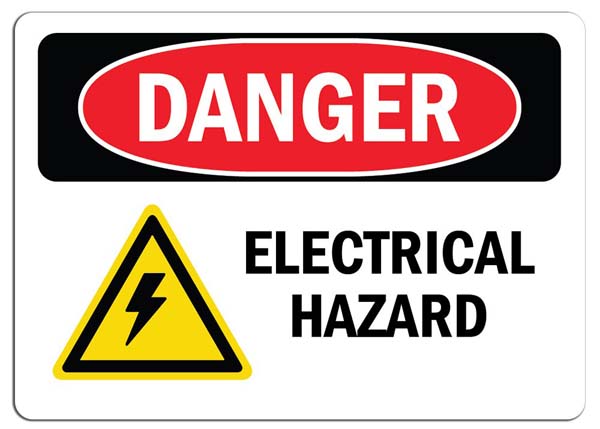
Chemical Hazard Symbol: Hazard Signs For Chemicals
A chemical hazard sign warns you about dangerous chemicals in your area. Because these chemicals can burn your skin, make you sick, and also cause an explosion if not handled properly. These locations include: science labs, factories, hospitals, and cleaning supply areas.
You can identify these signs as they have symbols like a test tube pouring liquid on a hand, a skull and crossbones. If you spot these signs, you should not try to touch anything until you are allowed to do this.
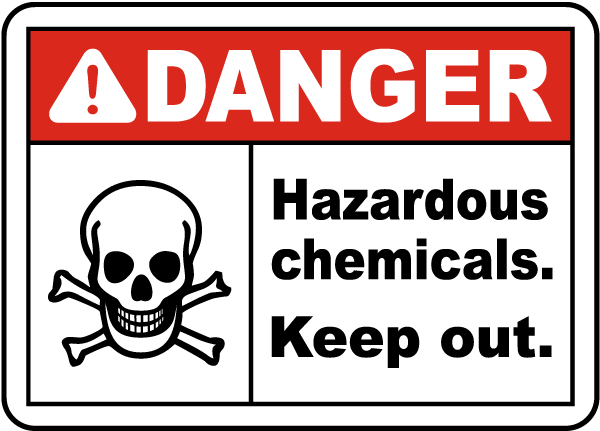
Radiation Hazard Sign/Radiation Area
Radiation is a powerful energy produced by radioactive materials that you can’t see, hear and touch but it can still be very dangerous for you. That is why radiation hazard signs are so important to mark such zones.
This law is strictly regulated by government safety organizations. The sign’s symbol looks like a black shape and three curved shapes that are attached to the center (kind of like a fan).
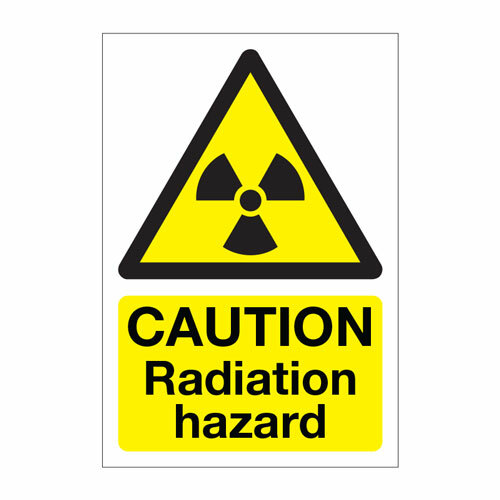
General Hazard Sign
General hazard signs are installed at roads, near buildings, public areas and workplaces. These signs do not show you exact danger, but it tells you that you have to slow down your vehicle’s speed and move carefully.
Generally, they have a yellow triangle with a black border and an exclamation mark (!) in their center. These signs caution about roadwork, fallen rocks, sharp turns and other small dangers.
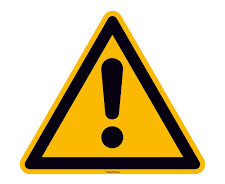
Biological Hazard Symbol
A biological hazard sign warns you about dangerous germs and viruses that can be risky for your health. These signs are mostly placed at your workplaces, labs, hospitals and where medical waste is handled. The symbol looks like three curved shapes which form a circle and has black, yellow or orange background.
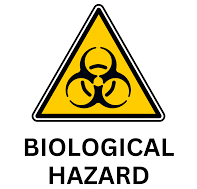
Hazardous Vehicle Signs
Hazardous vehicle signs are placed on and near vehicles that carry dangerous materials such as fuel, flammable liquids, chemicals and explosives. The shape of these signs are diamond and they follow international safety rules set by ADR and DOT.
These signs show you what kind of danger the vehicle has. For example: Explosive (Class 1) which indicates the bursting symbol and Compressed Gas (Class 2) has a green diamond with a gas cylinder icon.
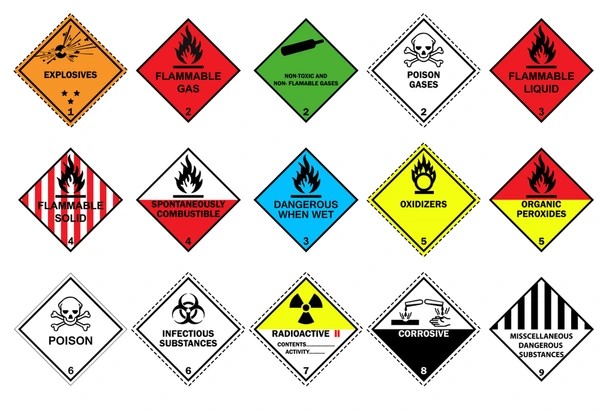
Truck Hazard Signs
You may see hazard signs on the front, back and sides of the truck. These basically inform you that trucks are carrying dangerous goods and also guide others drivers to stay careful around the truck.
Moreover, it is illegal to drive trucks that transport dangerous materials without the placement of hazard signs on them. Suppose your truck is loaded with fuel or alcohol, then you have to place a “Flammable Liquid” sign on your truck.

Environmental Hazard Signs
Environmental hazard signs warn you about something that can hurt nature such as water, land, animals and plants. You will see these signs on chemical containers, trucks and around zones where dangerous materials are handled. Plus, there is a picture of a dead tree and fish on these signs to warn you about harm to nature.
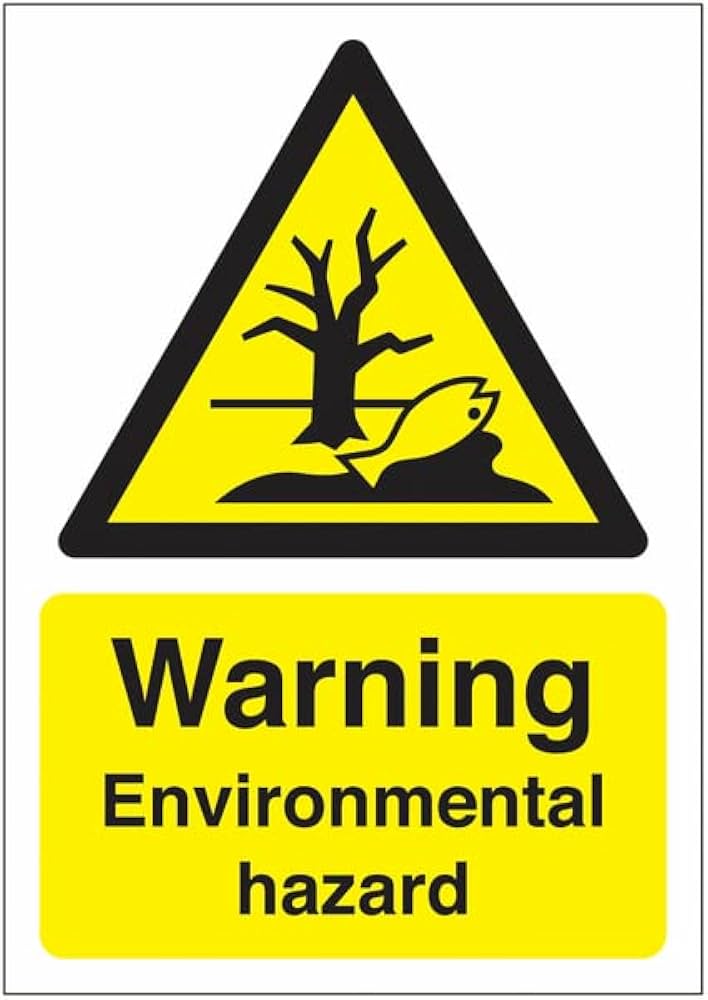
Workplace Hazard Signs
Workplace hazard signs used to guide workers about possible dangers. For example: fire, electricity, chemicals and heavy machinery. Additionally, these signs show you what kind of risk present in your operational area.
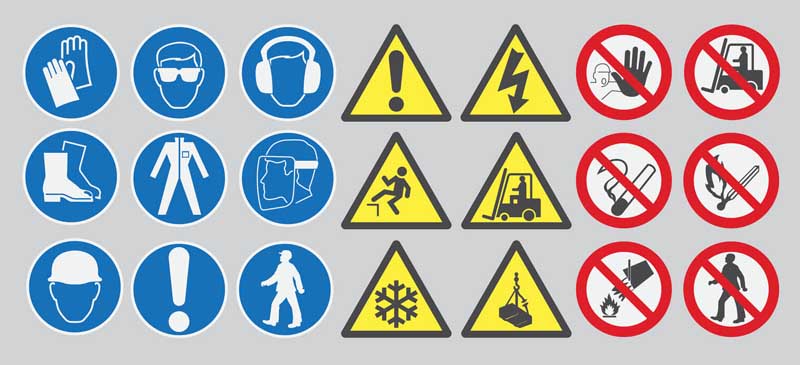
Road Hazard Signs
Road hazard signs installed on highways provide instructions to road users about risky conditions like sharp turns, bumps & slippery surfaces. Road authorities use these signs because it is legal and required by traffic laws as well.
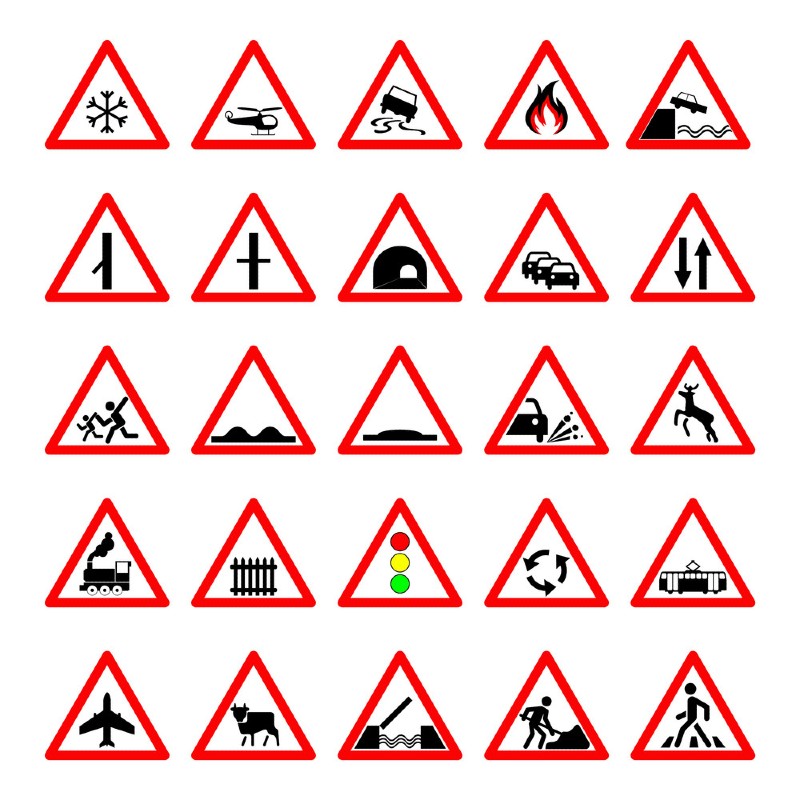
Hazard Signs and Symbols
Well, hazard signs do not always use words to warn you about something. Sometimes, they only show you bold and clear symbols instead of text. So that you can understand possible risks quickly. For example:
- A cloud with a skull shows you toxic gas in the air.
- Chemical burns are symbolized by a test tube pouring on a hand.
- Electric shock hazard marked by a bolt symbol.
- Poison is indicated with a skull & crossbones.
- The burning circle shows products that can release oxidizing chemicals.
- Damaged body symbol means the products can be toxic to your health.
Further Types of Road Hazard Signs
1. Traffic Signs Railroad Crossing
The Railroad crossing sign warns you about a train track ahead. It is shaped like a big white X with the words “Railroad Crossing” on it.
Whenever you notice this sign, slow down your car and look both ways for any other trains. You may see this sign near train tracks (train crossing sign) on roads when there are no gates/lights.
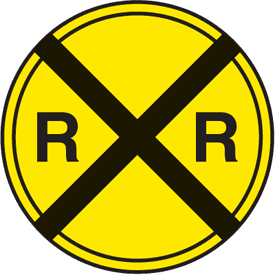
2. Trucks Entering Highway Sign
This hazard sign is placed on the road where big trucks with four trailers join the highway. Many truck drivers skip the stop sign and sometimes the trailer enters the wrong lane for a short distance. That’s why “Truck Parking Only Sign” is used to remind other drivers to pay extra attention.
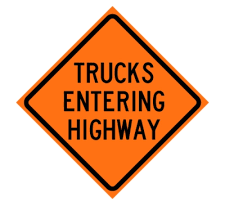
3. Heavy Equipment Sign
Heavy equipment crossing sign provides you information about the presence of big and powerful machines crossing the road. For example: diggers, bulldozers and tractors. That means danger is possible, so you have to reduce your vehicle speed and drive carefully.
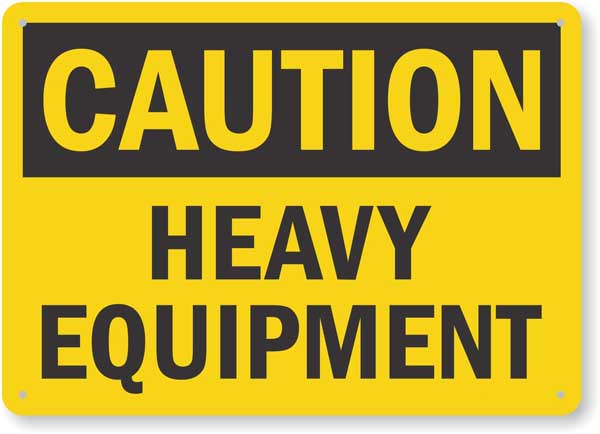
4. Watch For Trucks Sign
This sign tells you that trucks may arrive in or out of the road ahead. You usually see it near your factories, warehouses and delivery areas too.
Plus, it helps you to stay alert and also warns you to minimize your vehicle speed. Because trucks are big, move slower and need more space to turn/stop on the road.
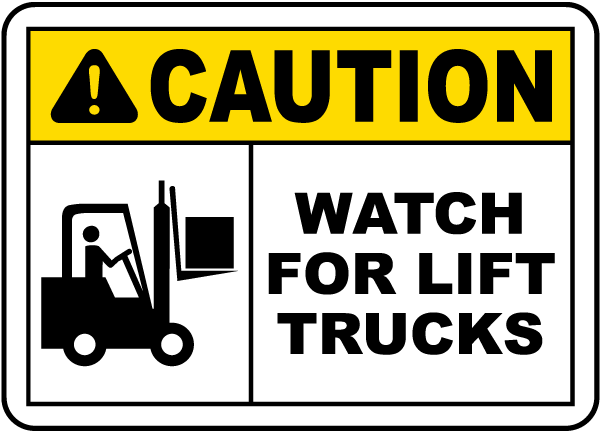
5. Dual Carriageway Ends
When you drive on the road and notice a “End of Dual Carriageway Sign”, that means the divided road is ending now. Hence, both directions of traffic will now share the same road. This type of sign is generally used to warn drivers to stay aware because there will be no center barrier that separates the lanes anymore.
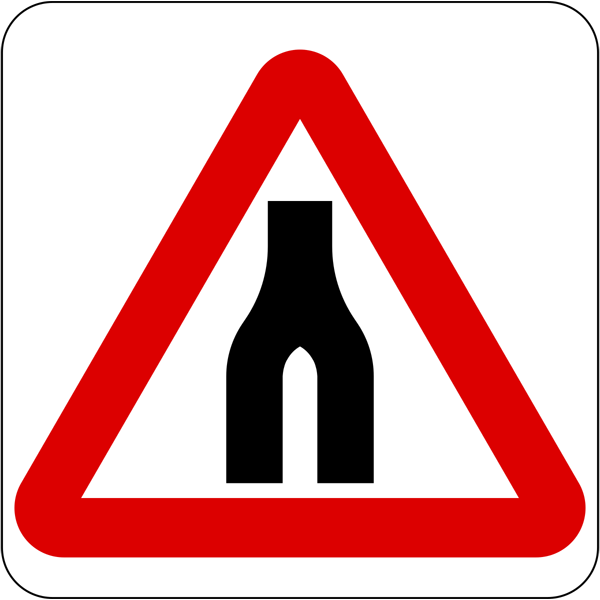
6. Road Junction on Bend Ahead
Suppose you see a sign that shows you a side road that joins a curve. That is actually a Junction on Bend Ahead sign. It tells you that a side road connects to the main road at a bend. It will be difficult for you to spot this bend. These signs are installed on country roads and curved highways to warn you about these bends.
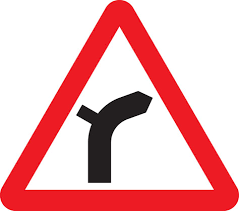
7. Tram Crossing Ahead Sign
You can identify the tram crossing ahead sign by the image of a tram or train-like vehicle on tracks. It informs you that there is a tram that may cross the road ahead. Hence, you should pay extra attention & reduce speed as well. If you ignore it, you can be at risk of a dangerous collision with a tram.
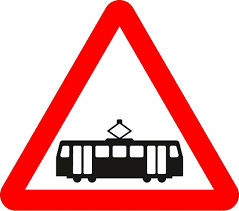
8. Traffic Queues Likely Ahead
To guide drivers about zones where traffic may build up and can stop suddenly. It helps you to get ready for cars that move at a slow speed or completely stop at all. So, you should reduce speed to avoid sudden stops.
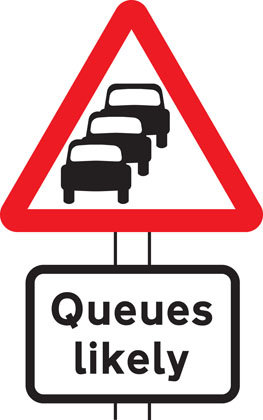
9. Soft Verges Sign
If we talk about soft verges signs, they actually warn you that the edge of the road is not safe for you to drive. So that you can stay on the hard surface of the road and avoid soft ground.
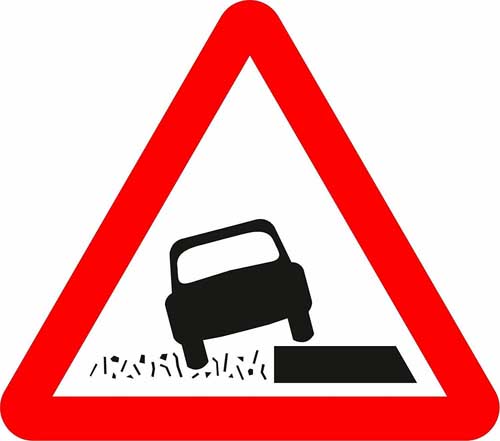
10. Worded Warning Sign
You may see this sign around your work zones, near machines or chemical areas. Worded warning signs use clear words such as “Danger” or “Caution” to tell you about possible risks. The purpose is that you can adjust your vehicle speed.
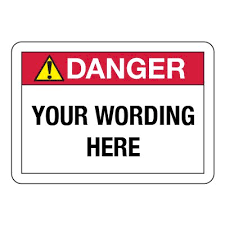
11. Quayside or River Bank Sign
Quayside or river bank signs indicate to you that there is deep water nearby such as river & dock edge. These areas can be risky for your vehicles. So, you need to drive slowly and carefully.
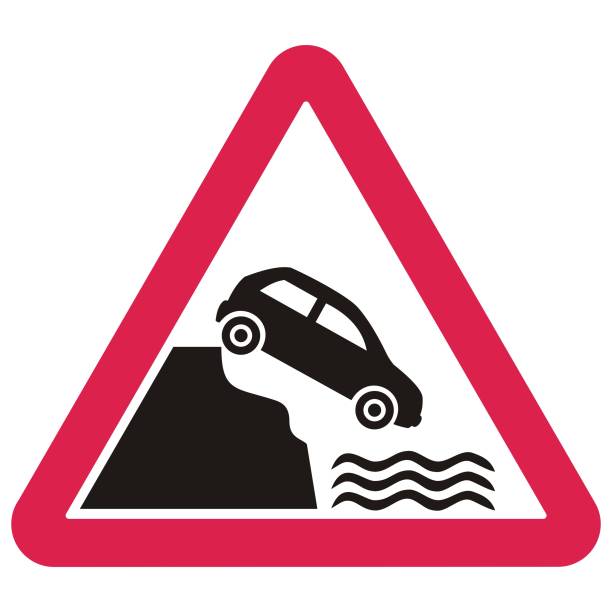
12. Dip Sign On Road
A dip sign tells you that the road goes down suddenly. It’s like a small dip/hole in the road. Hence, If you drive too fast, your car may bounce and also can lose control. That is why you should drive your car carefully on such sites.

13. Warning of Low-Flying Aircraft
You will see these signs near airports and airfields, where airplanes may fly very low over the road. The sound can be loud and sudden, which can confuse the drivers. So, whenever you spot this sign, stay focused and have a strong control on your vehicle.
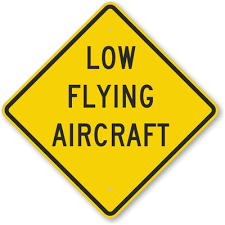
14. Side Winds Sign
This sign means that strong winds may blow from the side of your current road. Generally, placed in open areas such as bridges, hills and near the sea. Once you notice this sign, hold your car steering wheel tightly because the wind can push your car sideways.
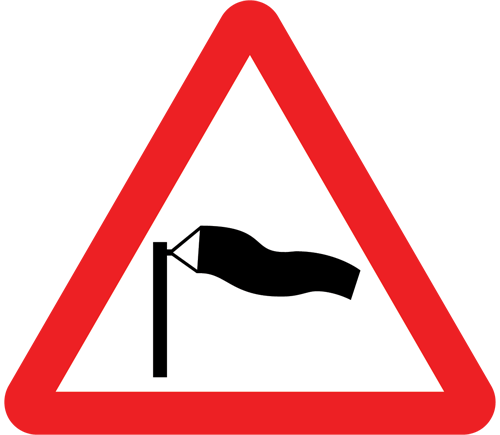
15. Low Clearance Sign
The low clearance sign instructs you that the space above your road is not very high. If your vehicle is tall, you have to check the height before you move under it. Usually, you may see them near tunnels, bridges and parking garages.
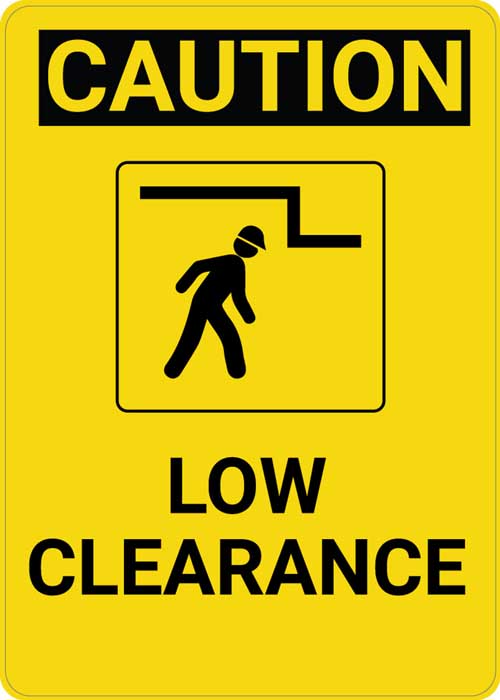
16. Crosswalk Sign
The crosswalk sign informs you that people may be crossing the highway ahead. So remember to reduce your car speed and give way to people so they can cross the road.
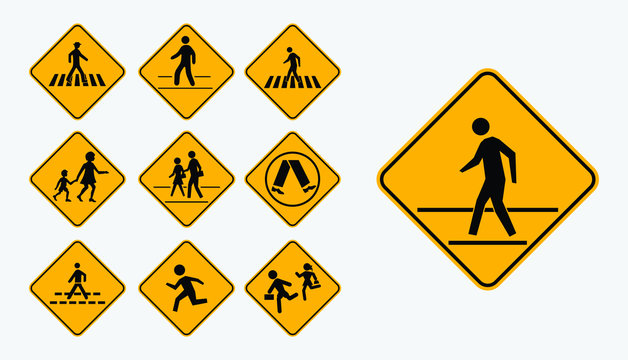
17. Signal Ahead Sign
You have to be prepared to follow traffic light rules because these signs indicate that traffic signals are coming soon in your way.
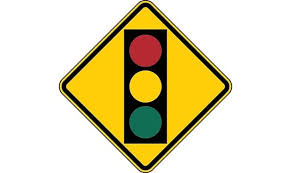
18. Two-Way Traffic Ahead Sign
Two-way traffic sign is placed where other vehicles can enter the road from both directions. So you should stay in your lane to avoid head-on collisions.

19. No Pedestrians Sign
You are not allowed to walk in such an area where you see “No pedestrian” signs . These signs are installed on busy roads and where vehicles move fast.
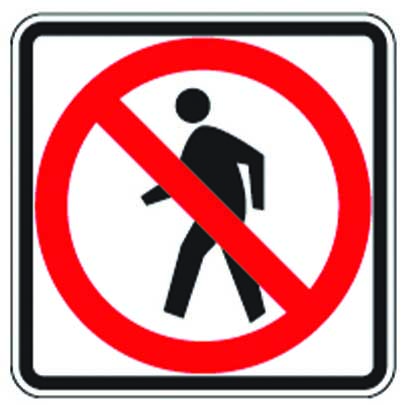
20. Double Curve Sign
The Double Curve sign warns that your current road will have two sharp turns, it curves twice: first in one direction and then the opposite. Hence, you need to drive carefully.

21. Speed Bump Signage
The speed bump sign tells drivers to reduce vehicle speed because a raised section on the road is ahead. It can make your ride bumpy if you cross it too fast.
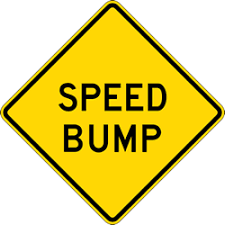
22. Divided Highway Ahead
Divided highway begins sign is used where the road ahead will split into two separate lanes. Whenever you see this sign, you should stay on your correct side.
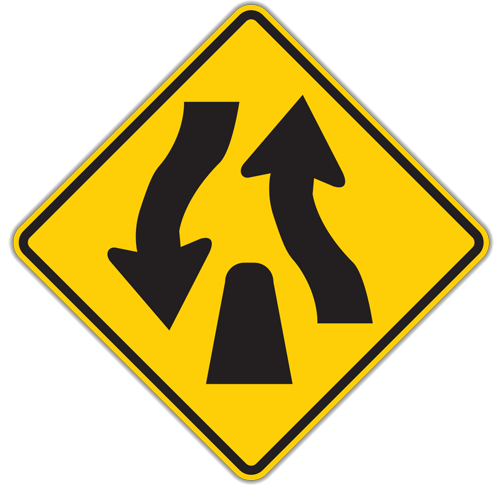
23. Loose Gravel Sign
The loose gravel sign tells you that small rocks are on the road and you should drive carefully. This will help you to avoid sudden moves and also protect your vehicle from damage.
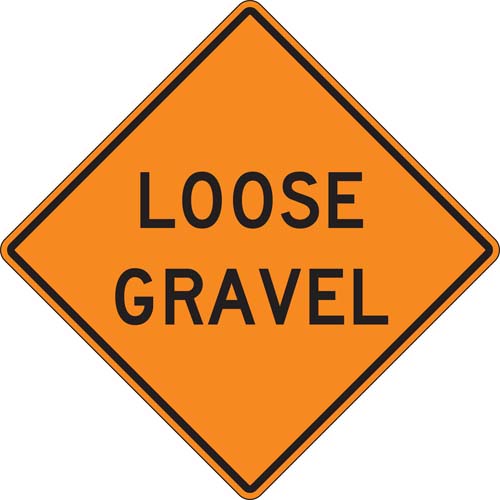
24. Dip Road Sign Meaning
Dangerous dip signs are placed in locations where the road has a deep and sharp drop. Hence, you will notice your vehicle suddenly jump up and you will lose control of the steering.
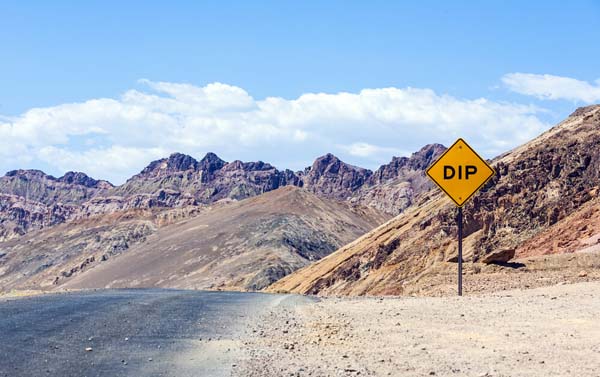
25. Shoulder Drop off Sign
A shoulder drop-off (pavement edge) sign warns drivers that the edge of the highway is lower than their main driving surface. It means the shoulder is not level with the road and you should stay in your own lane.
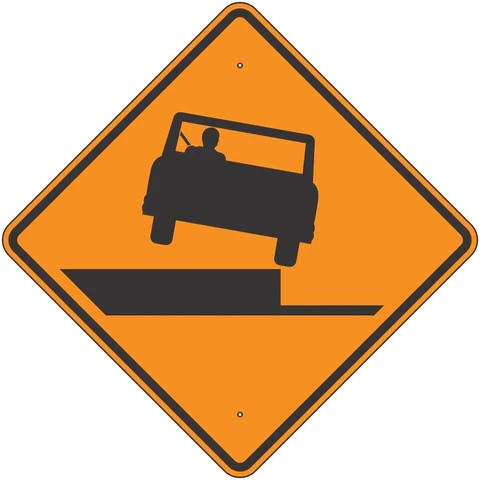
26. Falling Rocks Sign Meaning
Rock slide sign says that rocks might fall onto the road from nearby mountains. So, if you drive your vehicles in this area, you have to be very careful and watch the road closely.
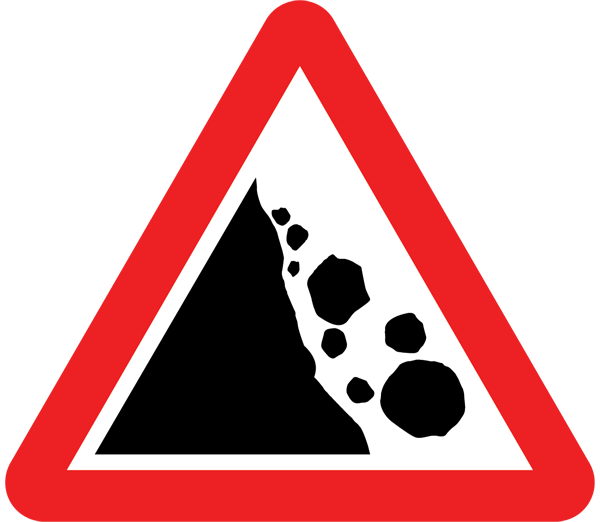
27. Flood Warning Sign
Flood Area Ahead signs warn you that the road ahead may be covered with water. So, if you drive through this zone, it can be risky for you.
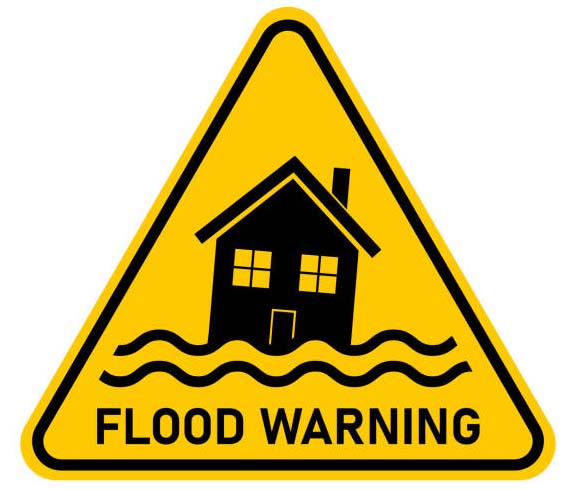
28. Road Avalanche Symbol
If we talk about “Avalanche Zone” signs, they are used to tell you that snow can fall from the mountains onto the road where you are driving. So, you have to stay alert.

29. Farm Machinery Crossing Sign: Tractor Sign
This sign means you are present in areas where farm vehicles such as tractors use the road. These vehicles are slow, so you should maintain a distance and avoid sudden overtaking.
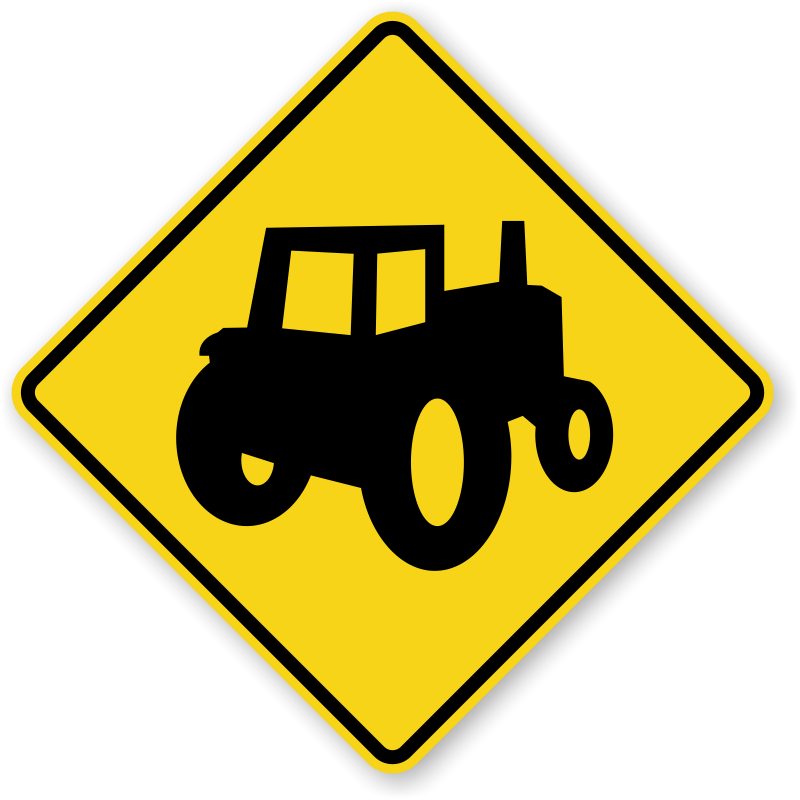
30. Slow Moving Vehicle Sign
These signs are installed on vehicles that move very slowly. Whenever you see these signs, you should reduce your own car speed to avoid sudden moves.

31. Uncontrolled Railway Crossing
Well, it shows you that there is a railway track ahead without any gates. That’s why you have to look both ways and cross only when it is safe.

32. Bridge -May Be Icy Sign
Bridge may be icy signs are placed to tell you about bridge surfaces that can get slippery in cold weather. So, you should use your car brakes & steering smoothly.
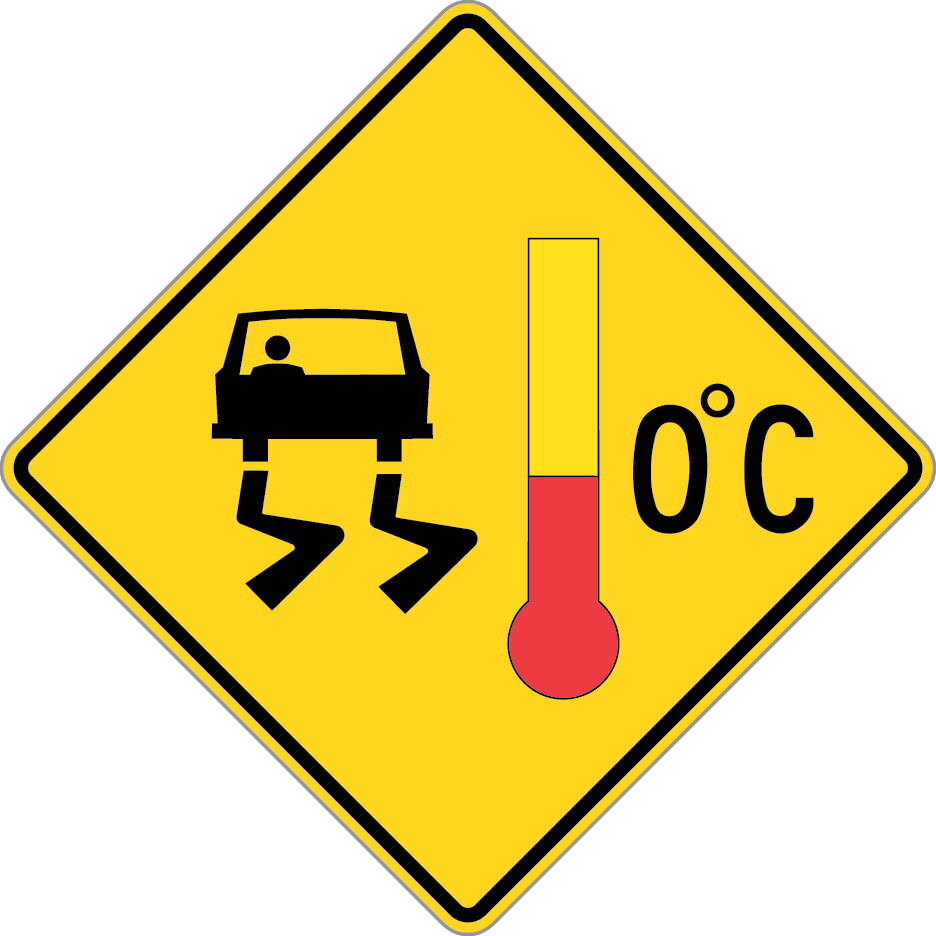
33. Road Chevron Sign
This sign tells you that a sharp curve is ahead. Hence, you need to follow the arrows and stay in your lane.

34. Emergency Stopping Only Sign
Emergency stopping signs warn you that the location is only for emergency stops. That means you can’t park & wait unless there is a real emergency.
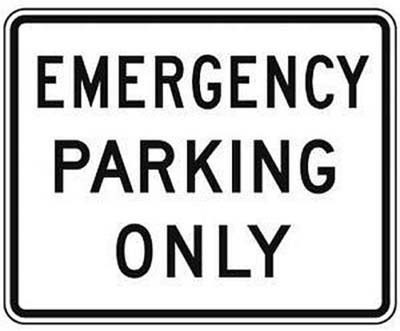
35. Pavement Ends Sign Meaning
These signs are installed where the road surface is rough or unpaved, which indicates that the smooth highway ended now and you need to reduce your vehicle speed.
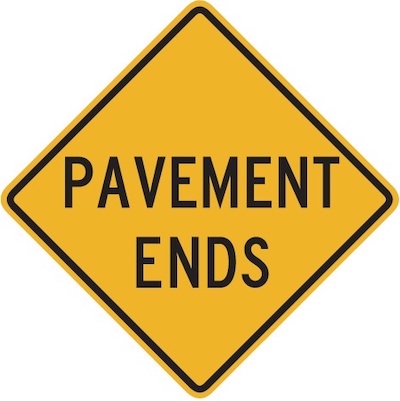
36. Intersection Ahead Sign
You will see these signs where another road will join and cross your current road. Therefore, you need to watch for traffic from other directions too.

37. Lane Shifting Sign
The lane shift ahead sign informs you that your lane will change direction (left/right) soon. As a driver, you should stay alert and carefully follow the new lane path.
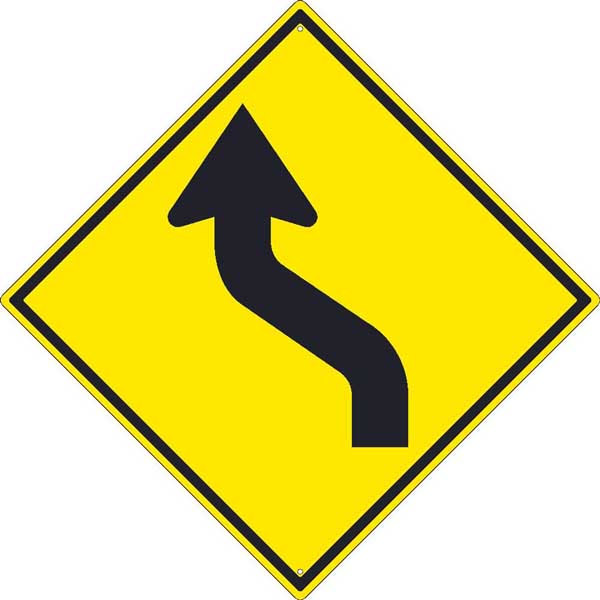
38. Congestion Signs
When you see “Congestion” signs, it means that traffic ahead is slow or may be blocked. Hence, you need to reduce your car speed and keep space between vehicles.
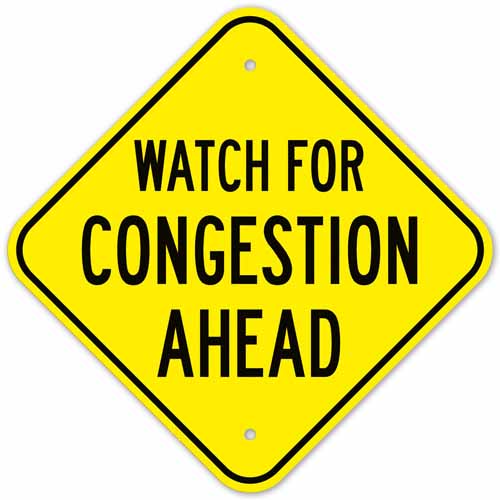
39. T Junction Road
T-junction signs mean that your road ends ahead. Now, you can turn left or right, but you can’t go straight anymore.

40. No Through Road Sign
No Through Road guides you that your road does not connect to another road. That means, there is no way for you to drive forward & to any other street.

More Types of Workplace Hazard Signs
-
Exploding Bomb Symbol
The explosion hazard sign alerts you about something that can blow up and cause risk for you. The sign shows a bomb exploding with pieces that are flying out.
You can see this sign in workplaces such as science labs, factories and places with strong chemicals.

-
Gas Cylinder Sign
Gas cylinder sign tells you that a gas tank is in your current area. These cylinders hold gas that is under a lot of pressure. So if it falls, gets too hot and is damaged, it can (burst/leak) harm you.
You will spot these signs near gas storage areas, rooms with gas tanks, hospitals, on trucks and vehicles that carry gas cylinders.
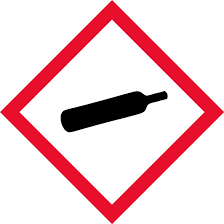
-
Danger of Death Signage
The Danger of Death sign warns you about something extreme danger. You will often see these signs around high electricity risky places such as power stations, electric poles and big equipment/machines. The only thing you have to do when you spot this sign, just move away from these places (only trained workers allowed).
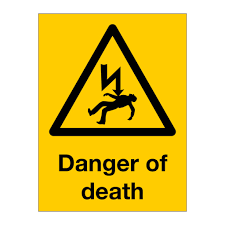
-
Flame Over Circle Pictogram
The Flame Over Circle sign guides you that there is a chemical that can make fire grow faster. Well, it does not catch fire on its own but helps other things burn. Generally, you will see this hazard sign in your workplaces such as labs, factories and chemical storage areas.
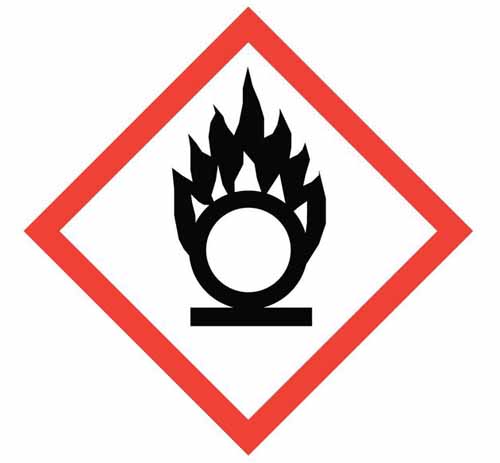
-
Exclamation Mark Hazard Symbol
Globally Harmonized System (GHS) regulates that safety officers and workers make sure that there should be an “Exclamation Mark” sign where they handle chemicals. Basically, these signs tell you that the product around you is not safe and you should pay attention to it.
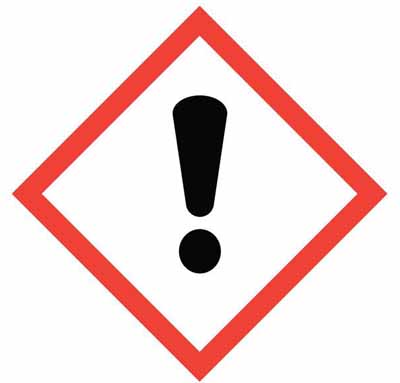
-
Caution Hot Surface Sign
Hot surfaces can be dangerous for you and burn you as well. That’s why it’s important for workers and visitors to know the risk. For this purpose, “Hot Surface signs” are placed in these areas. This sign warns you not to touch the surface and always follow safety rules.
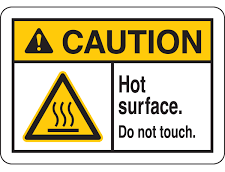
-
Skull and Crossbones Sign
The hazard symbol with skull and crossbones is a strong warning for you to stay away and not handle the material unless you are trained for that particular work. You will often see these signs if you are around labs, factories and chemical safety cabinets.
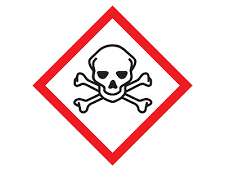
-
Slippery When Wet Signage
This sign means the floor/ground can be slippery when it is wet. It’s a warning for you that you can slip and fall (especially after cleaning & during rain).
Generally, this type of hazard sign is used in workplaces, malls, hospitals, kitchens, and public buildings. So, you should walk carefully or choose another path if possible.
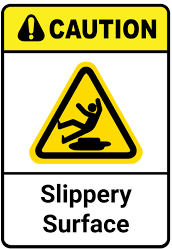
-
Gas Under Pressure Symbol
Gas under pressure sign indicates that the container holds gas under high pressure. In case it breaks, it can explode and shoot out forcefully.
So you should handle the container carefully and also keep it away from heat, mostly, you will find these signs in labs, factories, hospitals & workshops.
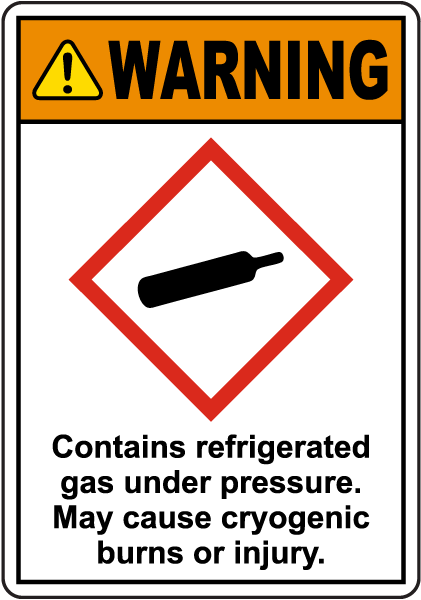
-
High Voltage Sign
If we talk about the “Danger High Voltage Sign”, it gives you an indication of high voltage wires and strong electricity in areas. This sign instructs you that you have to stay away and not try to touch wires/equipment. You may notice them in locations such as power stations, factories, and electrical boxes.
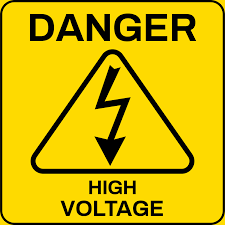
-
Workplace Flame Sign
Flame hazard signs are used to mark something that can easily catch fire. It means there is material nearby that is flammable and can burn if it is near heat, sparks & flames. You should keep away heat sources such as: candles, heaters, stoves and anything that can spark.
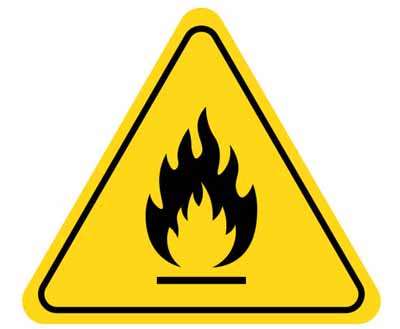
-
Corrosion Symbol Meaning
Corrosion symbols are placed to indicate the presence of chemicals that can burn your skin and are extremely dangerous for metal made things. It shows you a test tube pouring liquid onto a hand and a metal surface. You should wear gloves and don’t touch harmful liquids.
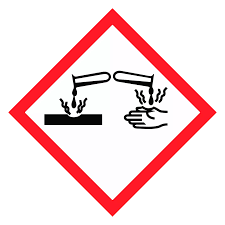
-
Mind Your Head Signage
This sign reminds you that you have to watch your head. It means something hanging above your head such as a low ceiling and pipes. This can hit your head and cause serious injuries if you are not careful. You will often see this sign in places like warehouses, in your construction areas and basements.
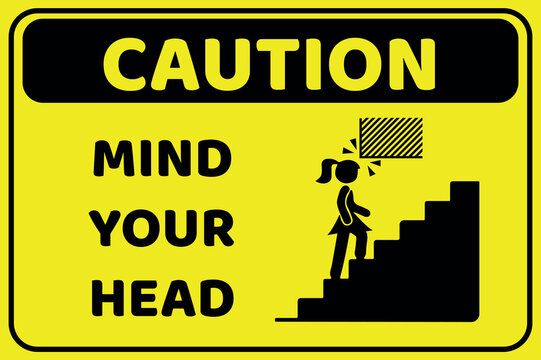
What Are The Colors of Warning Signs Indicating Upcoming Hazards?
Hazards signs use different colors to tell you about different kinds of dangers ahead. These colors are unique and not random. They follow safety standards and color specifications which are regulated by ISO and GHS.
- Yellow means caution and it warns you to be alert. For example: indications of sharp turns & slippery roads.
- Red means danger/stop and symbolizes serious hazards like fire.
- Orange color signs are used in construction zones to warn you about roadwork and heavy equipment.
- Blue shows you helpful information such as safety instructions and equipment locations.
- Green generally points to safety exits and first aid.
- Black & white signs guide you about the right way to drive your vehicles.
Conclusion
In the end, we can say now you have a good knowledge about all the hazard signs & how you can identify them. You can see how safety signs protect you from serious danger at your workplace and on the road.
If you are looking for a professional manufacturer of hazard signs, Jackwin offers you durable and top-quality products. Contact us now to get wholesale rates. Our engineering team will also customize products according to your requirements.


-80x69.png)

